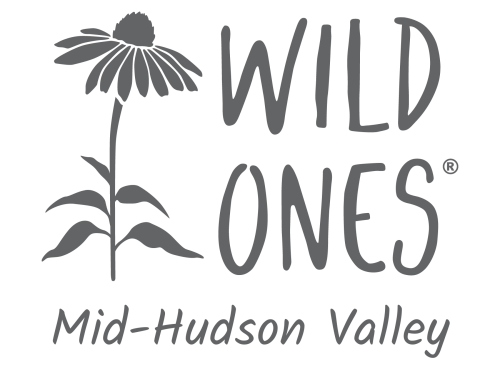Meadow Reflections
Exploring the Native Meadow Trials at HV Farm Hub in Hurley, NY Offers Refreshing Insights and Renewed Enthusiasm
By Sara DeAngelis
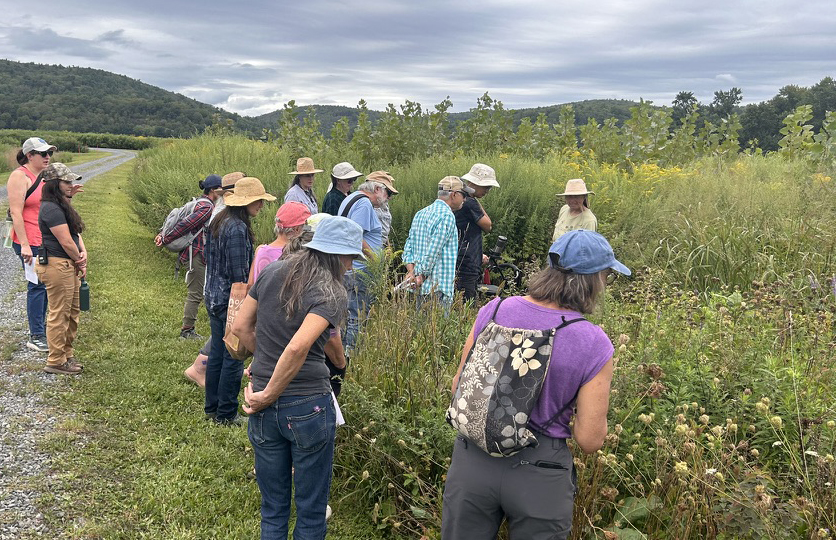
Claudia Knab-Vispo shared how looking at the variety of seed heads, flowers, leaf textures, and plant heights gives us insight into the diversity of plant species.
Picture a meadow—a habitat packed densely with plants that provide cover, food, and nesting places for birds, beneficial insects, and other wildlife. Many of us are considering how a meadow might replace our labor and carbon-intensive lawns. I’ve always imagined a meadow as a seasonally changing setting with grasses and wildflowers, a personal patch of prairie-style habitat, both lovely and beneficial. On a recent Wild Ones field trip, I realized how much more I still had to learn about meadows, especially how they transform the landscape’s ecology over time.
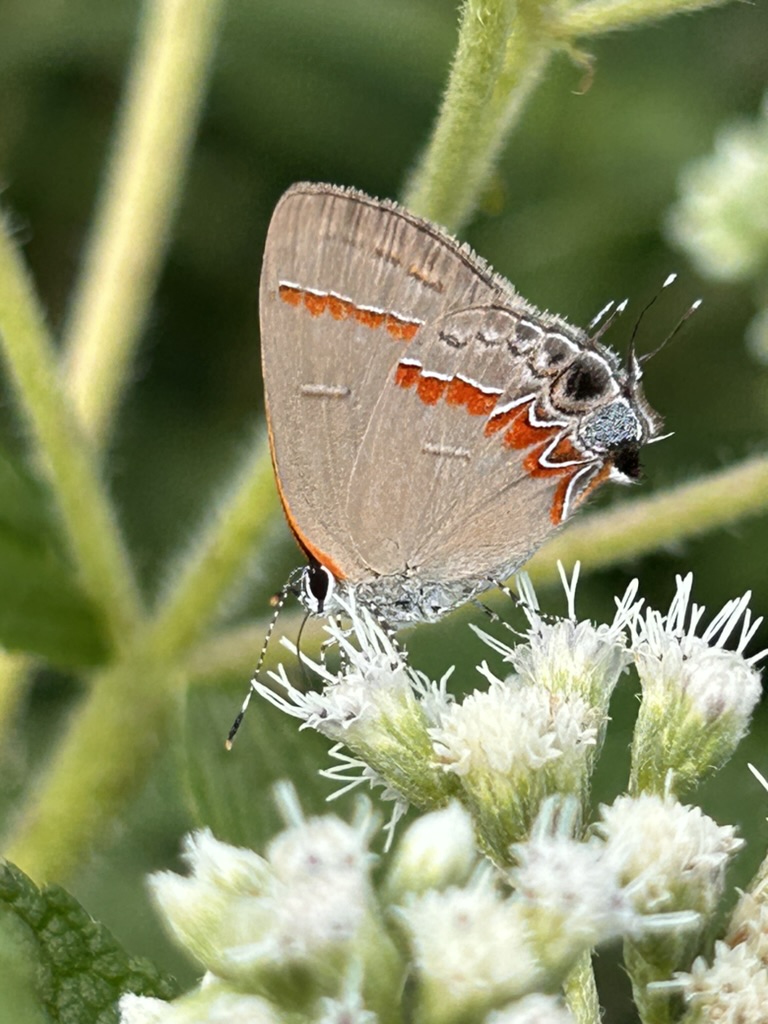
In August of this year, we were fortunate to visit the Native Meadow Trial at the Hudson Valley Farm Hub in Hurley, NY, for a presentation by staff from Hawthorne Valley’s Farmscape Ecology Program (FEP). The Native Meadow Trial is a research collaboration between the Hudson Valley Farm Hub’s Applied Farmscape Ecology Program and FEP.
Our group toured meadows established on that site in 2017 that have been rigorously studied for their plant and invertebrate composition ever since. Seeing how these demonstration meadows, now well established, have changed over the years was quite eye-opening.
The site we visited has three different trial planting types: one uses a flowering mix, another a grass mix, and the final version is a control. Each of the meadow trial plots was established as part of a rigorous study on agricultural land without herbicides by the team from the FEP. Claudia Knab-Vispo, their botanist, helped make the meadows and has studied them for years. Claudia was one of our guides and shared insights on how the plant composition has shifted and continues to change over time. Native plant diversity remains high. While the number of showy flowering species like short-lived perennials, for example, Black-eyed Susan (Rudbeckia hirta), has diminished from the first few years, the overall flowers available for pollinators have become more evenly distributed throughout the growing season. A wide range of species of flowering plants and grasses are present, and we saw evidence of Wild bergamot (Monarda fistulosa), New England aster (Symphytrichum novae-angliae), species of Goldenrod (Solidago spp.), Switch grasses (Panicum spp.), and Big bluestem (Andropogon gerardii).

Conrad Vispo shows participants a brightly colored dragonfly species that patrols the meadow, hunting for other insects as food.
Along with the changes to plant composition, the species of beneficial invertebrates, including ants, bees, beetles, dragonflies, butterflies, and moths, have also changed. Conrad Vispo, an entomologist and another of our field trip’s fantastic guides from Hawthorne Valley Farmscape Ecology Program, has been tracking the invertebrate diversity and compositional changes over time in the three meadows. To track the vast array of invertebrate groups and species, he uses a range of scientific tools, including acoustic monitoring, to record and identify the songs of insects, crickets, katydids, etc., whose chirps, clicks, and buzzes enliven the meadows during the day and night throughout the warmer seasons. Anne Bloomfield of the Hudson Valley Farm Hub’s Applied Farmscape Ecology Program spoke to us about the value these meadow habitats have for resident bird species using the farm, including sparrows and species like Bobolinks (Dolichonyx oryzivorus), as well as seasonally migrating birds, and overwintering birds that enjoy the many seeds these meadows produce.
Meadows are not only beautiful but also functional in many ways. They improve underlying soils, support pollinators and wildlife, require less mowing, do not require chemicals or fertilizers, and are aesthetically and ecologically dynamic. They are worthy of ongoing study, exploration, and engagement. Whether in a residential setting like my own or on formerly agricultural lands, meadows add to the tapestry of habitats for our pollinator species, have significant wildlife value, and are compelling visually.
My own newly established meadow strip at home is relatively tiny, a thousand square feet, and I seeded it last November, so I was very impressed by the scale of this project. I’m looking forward to seeing how my small meadow evolves and changes and observing it across the seasons for the plant species and the many organisms that will call it home.
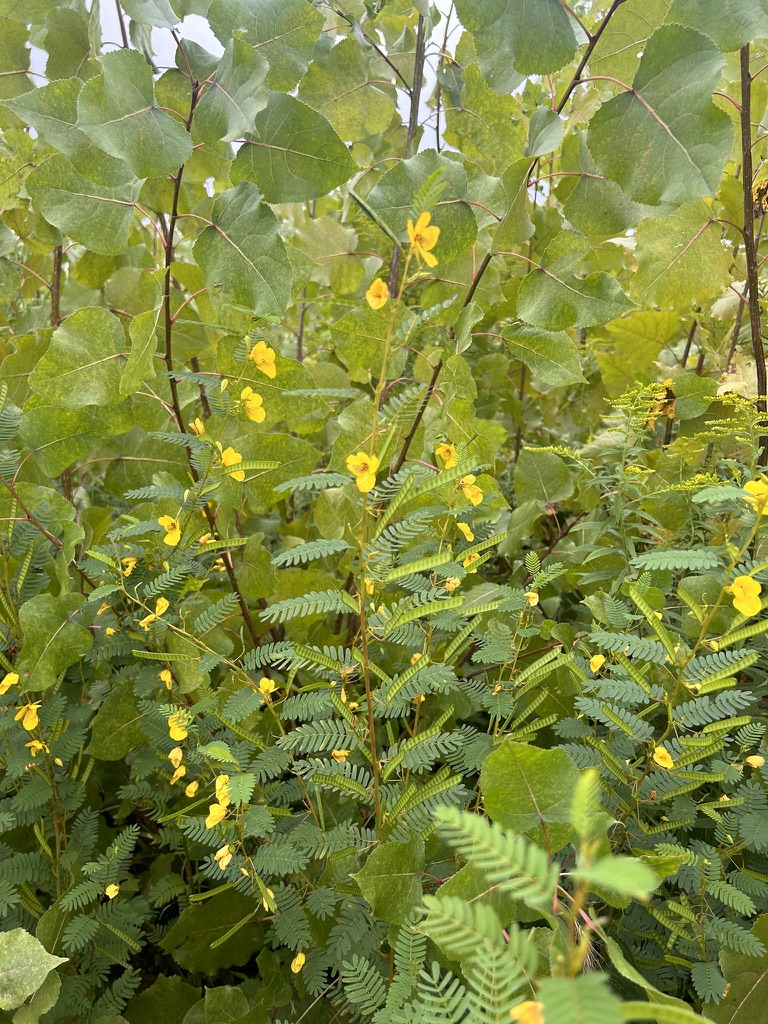
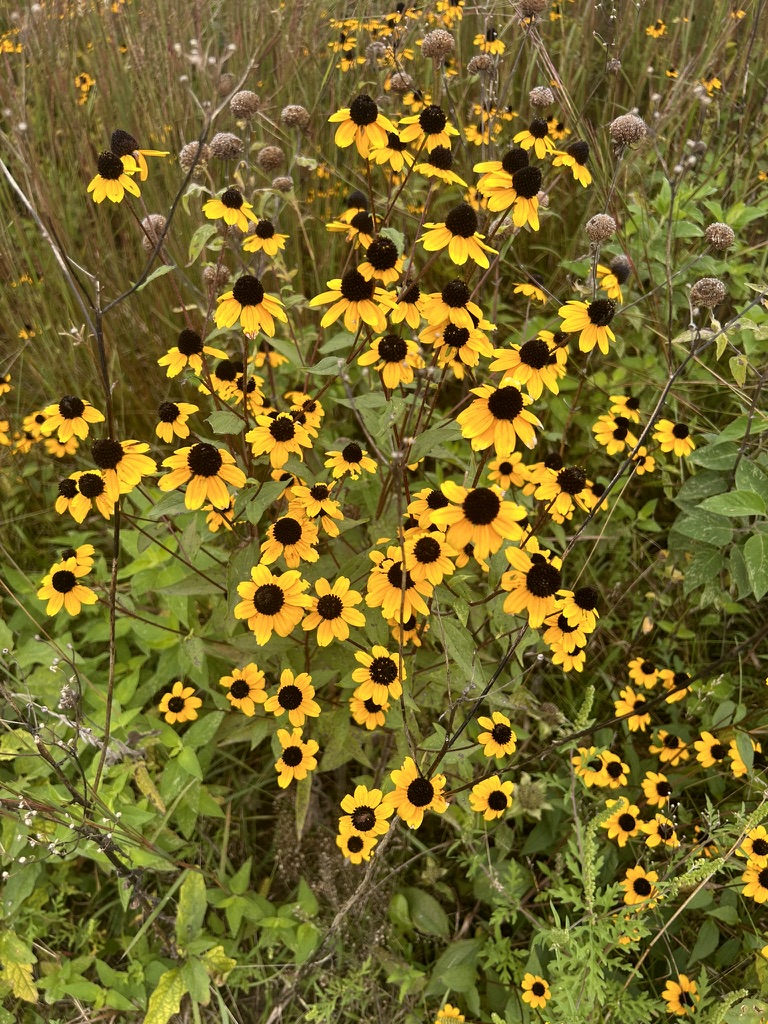
Photo 1 (from left to right): The textural leaves and bright yellow flowers of Partridge pea (Chamaecrista fasciculata) with poplar seedlings in the control plot.
Photo 2: Brown-eyed Susan flowers (Rudbeckia triloba) interwoven with the dried seedheads of Wild bergamot (Monarda fistulosa).
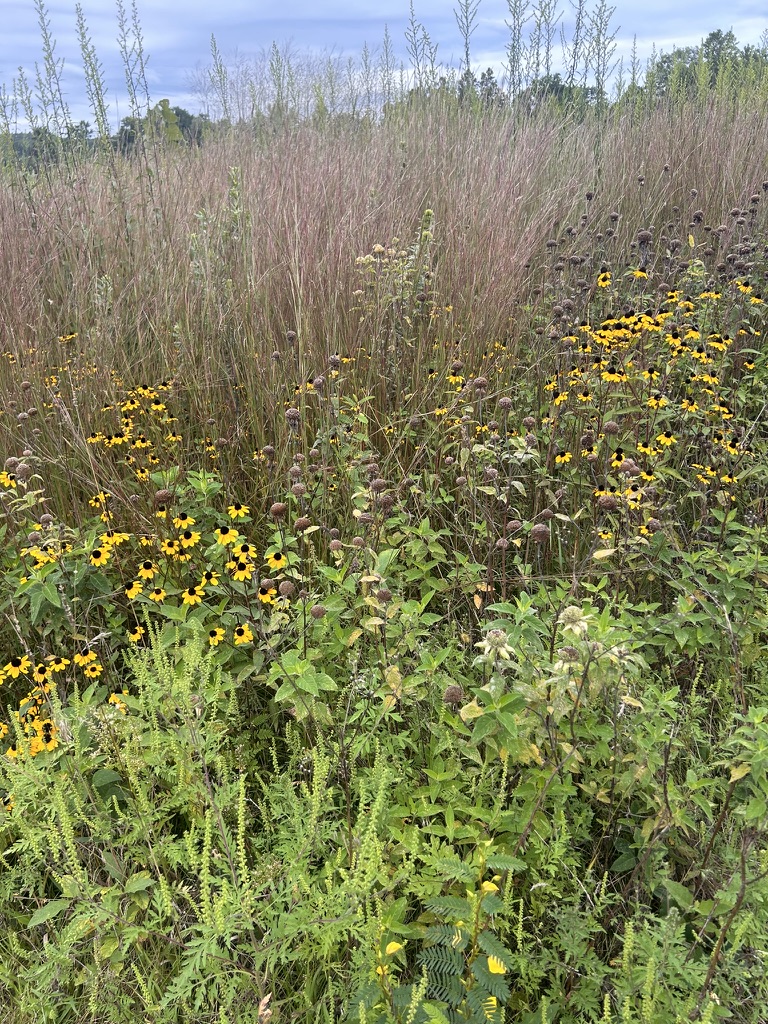
SUGGESTED READING/VIEWING
From the Hudson to the Taconics: An Ecological and Cultural Field Guide to the Habitats of Columbia County, NY, by the Hawthorne Valley Farmscape Ecology Program and Hudsonia Ltd. The field guide is accessible online.
Partners for Climate Action has created an action guide to creating pollinator-friendly habitats called Pollinate HV.
Hudson Valley Farm Hub’s Applied Farmscape Ecology Blog features fascinating stories about the site’s wildlife and ecology.
Lawns Into Meadows by Owen Wormser is a helpful book that makes clear the ecological restoration process, from planning and plant choices to planting and aftercare.
Xerces Society’s website includes a set of guidelines for Mid-Atlantic Native Meadows, which you can download as a PDF.

Sara DeAngelis is a consultant and educator in exhibition and experience design. She has been studying ecological landscape principles for several years and began focusing on gardening with native plants while living in California. She documents her plants, pollinators, and other wildlife on iNaturalist. In her spare time, she and her husband garden and are transforming much of their Ulster County yard into wildlife-friendly native gardens and meadows.
